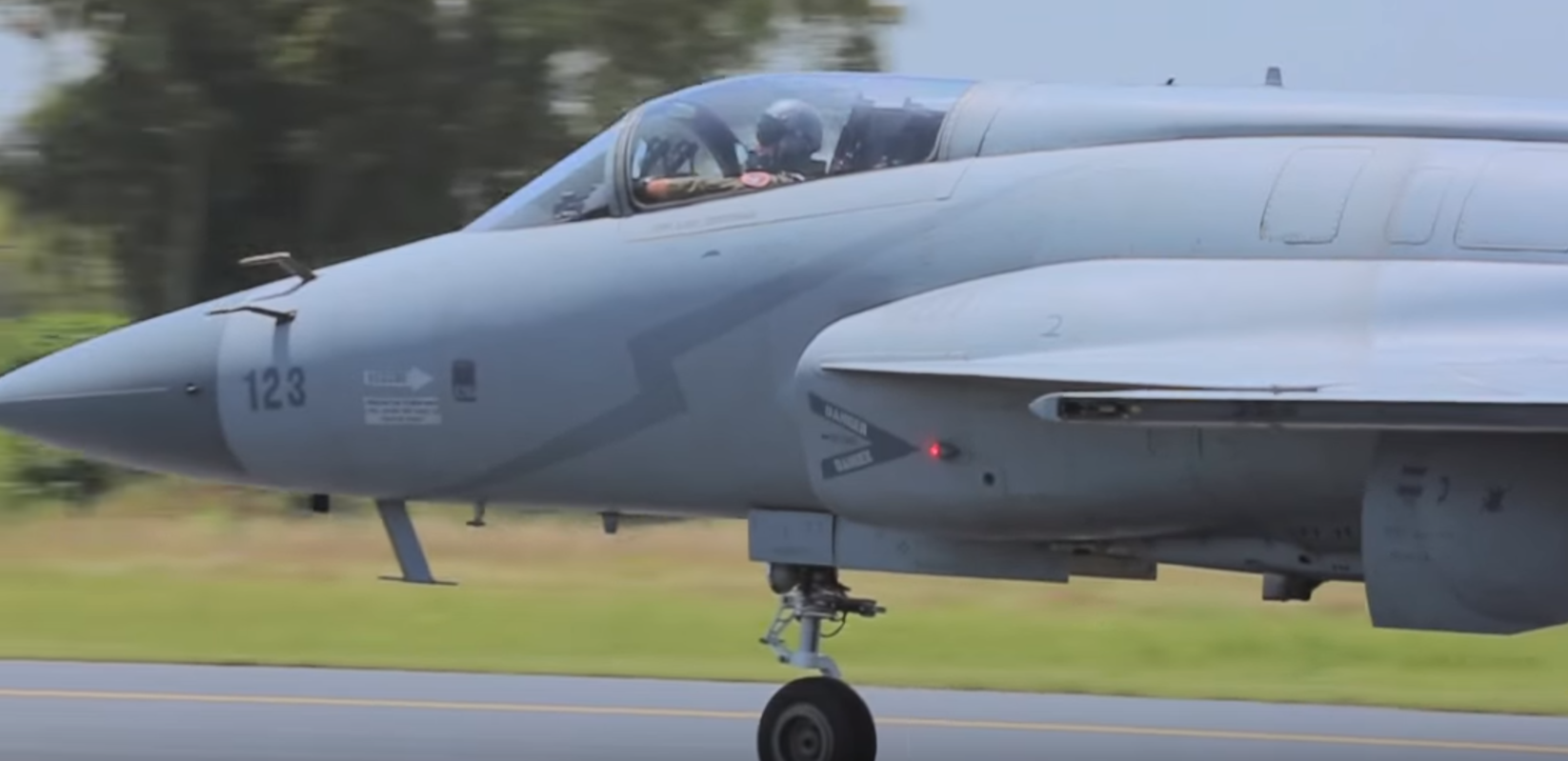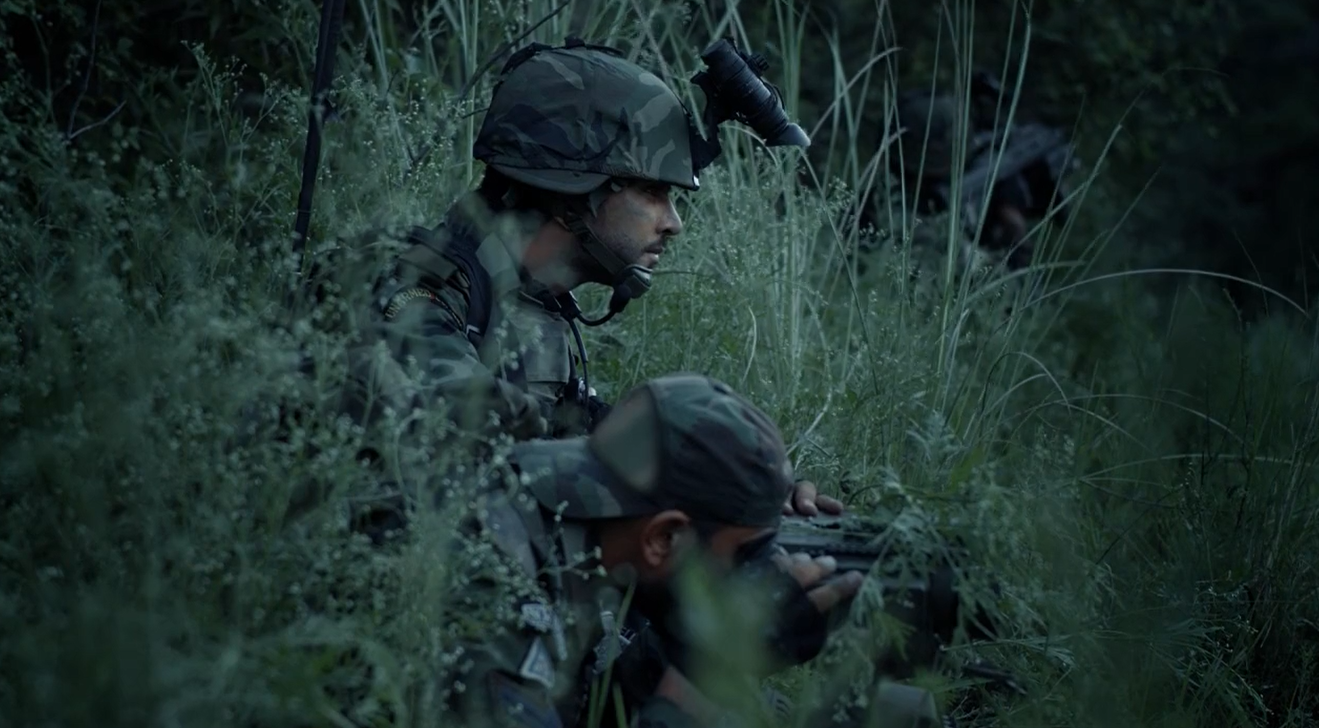30Views 75Comments

Pakistan wants the Damocles targeting pod for JF-17
08 April 2016
By Bilal Khan
In an interview with Reuters, Air Marshal Muhammad Ashfaque Arain – the second-in-command of the Pakistan Air Force (PAF) – revealed that the PAF was seeking the Damocles targeting pod for use on the JF-17 Thunder.
Produced by the French defence vendor Thales, the Damocles is a third-generation targeting pod designed to enable fighter aircraft to engage in precision-strike operations.
Similar in form and function to the Lockheed Martin Sniper Advanced Targeting Pod (ATP) in use with the PAF’s F-16s, the Damocles is equipped with electro-optical and infrared (EO/IR) instruments that mark targets for laser-guided and TV-guided air-to-surface munitions.
Since its introduction in 2008-2009, the Damocles has emerged as a fairly popular precision-strike support system, with about six air forces adopting the targeting pod. In fact, besides French-built fighters such as the Dassault Rafale and Mirage 2000-5/9, the Damocles is also in use with numerous Sukhoi platforms, such as Malaysia’s Su-30MKM as well as Russia’s Su-34s, Su-27s, and even Su-24s.
This news is interesting on a few levels.
First, it was plainly stated by a very high-ranking PAF official, which is certainly not a common occurrence in the world of Pakistani defence acquisitions. When one reports about Pakistani interest in any defence system, it is usually done through the use of media reports that claim to have credible unnamed sources. In the case of the Damocles, the news is coming straight from the PAF itself.
Second, Air Marshal Arain’s statements about the JF-17 not having a targeting pod casts a bit of doubt on the trade-registers of the Stockholm International Peace Research Institute (SIPRI), at least with regards to Pakistan. SIPRI actually claims that the PAF took delivery of 65 WMD-7 targeting pods from China (along with a slew of laser-guided and INS/GPS-guided air-to-surface munitions). But the statements made by Air Marshal Arain seem to suggest that the PAF has not actually settled on the JF-17’s strike package, at least in regards to the fighter’s targeting pod, but potentially even in terms of its munitions as well.
Third, according to Air Marshal Arain, the PAF’s interest in the Damocles is borne from the fact that it has seen extensive combat use. This is true. In fact, not only have the French used the Damocles (with their Rafales) in various theatres over the past 5 years, but so have the Russians and the Gulf Arab states (i.e. Saudi Arabia and the United Arab Emirates). The PAF has a record it can assess before moving forward with its acquisition.
Overall, the Damocles is not a bad choice, and though it may seem like an unlikely contender for use on the JF-17 at first, there are a few things about the Damocles that do make it a suitable choice for the Thunder. The pod’s combat record aside (which gives the PAF an idea of its effectiveness), Thales has not had any significant problems with integrating the Damocles on a diverse range of platforms, including Eastern aircraft such as the Flanker, Fullback, and Fencer. Of course, this should not be an issue today given the standardization of subsystem interface technology, but still, living examples of Damocles’ use on non-native (especially non-Western) platforms is a very welcoming indication.
Another aspect worth considering is the fact that the Damocles has been paired with air-to-surface munitions from a diverse range of vendors. For example, the French have used the Damocles with their own guided-bombs (i.e. SAGEM AASM), but the Russians have used it with their own homemade KAB-series kits. The UAE has used the Damocles with its al-Tariq guided-bombs (which are license-built versions of the Umbani kit offered by the South African vendor Denel).
The Damocles’ successful integration with a diverse range of launch platforms and guided-munitions makes it a suitable option for the JF-17. Make no mistake, this is a good targeting pod. For example, not only can it guide laser and TV-guided munitions (at day and at night), but it can also acquire target coordinates at stand-off range, which could then be inputted into INS/GPS-guided bombs. It can even be used for reconnaissance, albeit to a lesser degree of effectiveness compared to a dedicated photo-reconnaissance pod.
Air Marshal Arain also noted that if the Damocles could not be acquired, the PAF would have to settle for ‘unproven’ options. He is likely referring to the Chinese WMD-7 and potentially Turkish ASELPOD. While a point, there is not much to discuss in this regard. The PAF is looking to push the JF-17 into combat in relatively short order, and it wants it to succeed right from the onset. Note, it is not simply an issue of wanting a Western pod, it could have opted for the ASELPOD or even Thales’ newer Talios, but the PAF wants the older Damocles precisely because it is – in the words of Air Marshal Arain – “a battle-proven system.”
Should the PAF acquire the Damocles, it should be mindful of the following issues. First, the PAF needs to consider long-term viability, not only in terms of the pod’s capabilities, but in terms of guaranteeing its long-term support within the PAF fleet. Although a more expensive route, it would not be a bad idea to acquire the Damocles with some measure of technology transfer, if not for domestic production, then for in-house maintenance and support, at the minimum. In fact, given that the newer Thales Talios is to enter service in 2018 and gradually replace the Damocles in French service, Thales might not be averse to the idea of letting Pakistan produce the Damocles under license (albeit for the ‘right’ price).
Another system that might be worth considering – alongside the Damocles – is the Thales Digital Joint Reconnaissance Pod (DJRP), a photo-reconnaissance pod squarely designed for lightweight fighters on the export market. We had advocated the idea of giving the JF-17 a dedicated photo-reconnaissance pod nearly a month ago, albeit through purchasing a system from the Danish firm Terma. An alternative is Thales, but again, genuine value would only be had by bringing the maintenance and support infrastructure to Pakistan, at least. Otherwise, the PAF will be beset with having to contract Thales on a routine basis to help support its subsystems. This is true for any vendor, which is one of the reasons why acquiring systems with transfer-of-technology is a valid – though expensive – idea.
This will be seen as too far of a stretch, but Pakistan ought to acquire the Damocles (and any other subsystem from Thales) with not only the license to produce it in-house, but also re-export it alongside the JF-17 as well. Not only could this approach help compensate for the cost of producing the pods in Pakistan, but it would also raise the profile of the JF-17 on the commercial market. In any case, this is simply pie in the sky thinking on our part, though worth considering. It will also be interesting to see if a successful Damocles purchase could lead to the purchase of the TopOwl-F helmet-mounted display and sight (HMD/S) for use on the JF-17 Block-III (the helicopter version of the TopOwl will join the Pakistan Army via its AH-1Z Viper acquisition).


